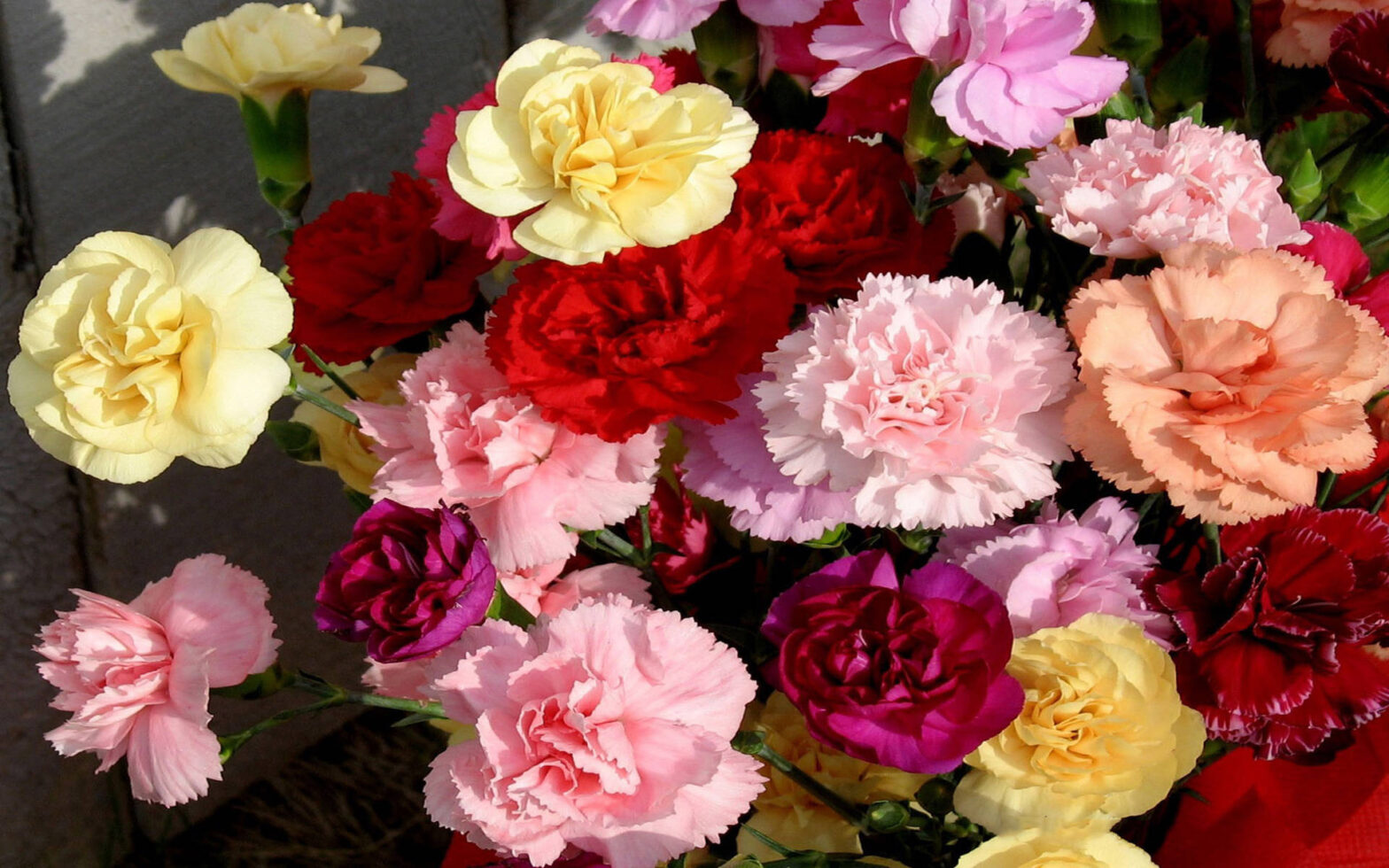Carnations, scientifically known as Dianthus caryophyllus, are cherished flowers that have captivated hearts for centuries with their timeless beauty, delicate petals, and enticing fragrance. These versatile blooms come in a wide range of colors and are renowned for their longevity, making them a popular choice for various occasions and floral arrangements. In this article, we will explore the fascinating world of carnations, delving into their characteristics, cultivation, symbolism, and the many ways they enhance our lives.
Section 1: Characteristics and Varieties
- Blossoming Beauty: Carnations are characterized by their ruffled, multi-layered petals and sweet fragrance. They are available in a rich palette of colors, including shades of red, pink, white, yellow, and purple, among others. Some varieties feature captivating striped or variegated patterns, adding to their visual allure.
- Long-Lasting Blooms: One of the notable qualities of carnations is their exceptional longevity. These flowers have a remarkable vase life, remaining fresh and vibrant for an extended period, even after being cut. Their ability to maintain their beauty over time has made them a favored choice for floral arrangements and bouquets.
Section 2: Cultivation and Care
- Sun and Soil Requirements: Carnations thrive in well-draining soil with a slightly alkaline to neutral pH. They require at least six hours of direct sunlight each day to promote healthy growth and abundant flowering.
- Planting and Maintenance: Carnations can be grown from seeds or propagated through cuttings. They are typically planted in spring or autumn, allowing enough space between plants for adequate air circulation. Regular watering, deadheading, and fertilization help maintain the plants’ vigor and promote continuous blooming.
Section 3: Symbolism and Meaning
- Love and Admiration: Carnations have long been associated with sentiments of love, admiration, and affection. Different colored carnations convey specific meanings, with red symbolizing deep love and admiration, pink representing maternal love, and white symbolizing purity and luck.
- Mother’s Day Flower: Carnations hold a special place as the traditional flower for Mother’s Day, honoring the unconditional love and care of mothers worldwide. They are often gifted as a token of gratitude and appreciation on this special occasion.
Section 4: Cultural Significance and Uses
- Traditional Celebrations: Carnations have played important roles in cultural celebrations and festivities around the world. They are commonly used in weddings, birthdays, anniversaries, and religious ceremonies, symbolizing love, luck, and happiness.
- Floral Crafts and Perfumery: The enchanting fragrance and delicate petals of carnations have made them a popular choice for floral crafts, including wreaths, boutonnieres, and corsages. They are also used in perfumery, contributing their captivating scent to various fragrance blends.
Conclusion: Carnations, with their enduring beauty, diverse colors, and rich symbolism, hold a significant place in the world of flowers. Whether adorning a vase on a dining table, expressing heartfelt emotions on special occasions, or enhancing our lives with their fragrance, carnations have touched the hearts of people throughout history. As we continue to appreciate their elegance and cultural significance, carnations remain timeless symbols of love, admiration, and beauty, enriching our lives with their delicate presence and captivating charm.
